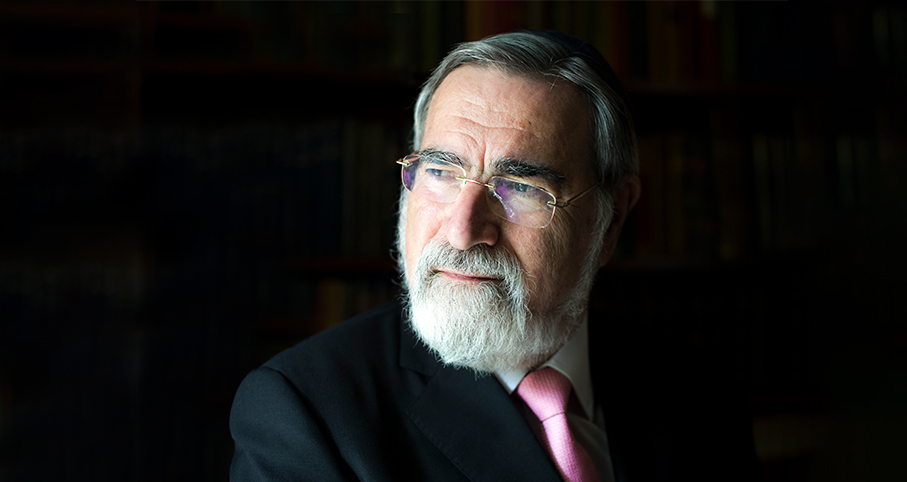- Family and Society
- Rain in Israel
9469
2. Three Explanations
3. Man, Land, and Rain
The "Yoreh" and the "Malkosh"
In our previous discussion, we focused on the various meanings of the word "yoreh," the first rains. This time we shall discuss the "malkosh," the last rains, in light of the explanations given by our sages in the Talmud. It is appropriate to discuss the malkosh at this point, just after the yoreh, because the two are always mentioned together, in one breath, and it would appear that we can learn something from their proximity.

Rain in Israel (17)
Rabbi Uzi Kalchaim zt"l
9 - The First Rain
10 - The "Malkosh" - Last Rains
11 - The Might of Rain
Load More
In the ears of the sages, the word "malkosh" has a negative ring. The Talmud asks, "Perhaps [it is termed] 'malkosh,' because it razes the houses to the ground and it shatters the trees and brings up the crickets?" (Taanit 6a).
To refute such an idea, the sages note the proximity of the malkosh to the yoreh and explain that just as first rains are a blessing so too are latter rains. To substantiate this conclusion, the sages invoke the verse "For He gives you the former rain [yoreh] in just measure and He causes to come down for you the rain, the former rain and the latter rain, at the first" (Joel 2:23). Thanks to its closeness to the yoreh, the malkosh is considered a positive phenomenon.
We might explain the negative view of the malkosh as stemming from the fact that the word "malkosh" comes from the root "lamed-kof-shin," which indicates tardiness. Things that arrive late appear to be deficient. The yoreh, on the other hand, elicits our eager anticipation. The furrows of the field thirst for it, the reservoirs long for it, and its benefit is apparent to all. The malkosh, though, comes after almost all the rains have fallen, when we are already tired of rain and anxious for spring's arrival.
The Talmud states, "Our Rabbis have taught: Former rain [falls] in Marcheshvan and latter rain in Nisan" (Taanit 6a), and according to the Midrash, "there is the former rain in Kislev, the latter rain in Nisan and other rain in the middle" (Vayikra Rabbah 35:12).
Because the malkosh comes after all of the rains, it appears unimportant. Therefore, when our sages sought to express disappointment resulting from tardiness, they used the verb form of malkosh - "hilkish," meaning to delay something: "Did I tell you that I would bring you goodness and then delay it?" (Bamidbar Rabbah 1:2), and "Did I say I would bring you into the land and then delay you?" (ibid. 23:10).
Three Explanations
We have noted that the proximity of the yoreh to the malkosh benefits the latter - "the rain, the former rain and the latter rain, at the first" (Joel 2:22). They both bring a blessing.
This allows us to understand the Talmudic adage regarding the elevated status of the malkosh: "R' Nehilai ben Idi said in the name of Shmuel: ['Latter rain' is termed] 'malkosh' because it is a thing that removes the stiff-neckedness of Israel." Here the sages see the word malkosh as being a combination of two words - "mal," to remove, and "kosh," stiffness, stiff-neckedness.
Rashi explains that when the malkosh does not fall, the Jewish people repent, fast, and give charity. Similarly, "When Israel sins and does evil, the rain stops. Then they call upon a sage and he inspires them, softening their hearts to repent" (Jerusalem Talmud 1:1)
The students of Rabbi Yishmael offer a different explanation. According to them, the malkosh is "something that fills the stalks with grain." Here, too, "malkosh" is seen as a compound of two words - "maleh," to fill, and "kash," stalk.
When it comes to this stage, the completion of the grain stalk, the last rains have an advantage over the first rains. After the first rains foster the seeds and cause them to grow into stalks, the malkosh comes and fills the stalks with grain. The energy of the first rains is invested entirely in turning the seed into a plant that will grow and develop, and now the malkosh comes to complete the job.
The Talmud brings a third explanation of the malkosh - "[It is] something that falls both upon the ears and upon the stalks." This is not a description of what the malkosh brings about, as in the previous definitions, but a description of the malkosh itself. In contrast to the yoreh, which falls upon the dry and cracked earth, the malkosh rains down on fields filled with grain stalks. These are not the same desolate fields of early winter; the malkosh falls "upon the ears and upon the stalks."
The yoreh represents the winter's beginning and comes at a time when the fields are eager for rain. The malkosh comes at the end of the rainy season. It marks the completion of a growth process and represents the joy of fulfillment.
Man, Land, and Rain
Why do our sages see the word "yoreh" as containing a single root ("yod-resh-heh" - teaching or shooting), but the world malkosh as a compound of two words? Perhaps because the yoreh is first, while the malkosh is second, final. In order to underscore its secondary nature, they explain "malkosh" as being composed of two words. Though they are familiar with the root "lamed-kof-shin," meaning late, and even make reference to it, as discussed, they nonetheless wish to emphasize that there are primary rains and there are secondary rains.
Interestingly, the three explanations for the yoreh given by the sages parallel those of the malkosh.
The first relates to man, and what the rain teaches him. The yoreh warns us to seal up our roofs and bring in the cows. The malkosh removes the obstinacy from our hearts and accustoms us to humbling ourselves before God.
The second relates to the effect of rain upon earth. The yoreh saturates the furrows and saturates down to the depths, preparing the seeds for growth. The malkosh - at the end of this process - "fills the stalks with grain." The barren fields are now full of produce and the malkosh comes to complete the growth process.
The third relates to the rain itself, its manner of falling. The yoreh falls gently. It falls in places that need rain, and it does not cause damage. In this manner it accomplishes its purpose. The malkosh, on the other hand, falls upon the ears and the stalks, yet it does not break them or wash them away. It represents the final stage of the winter rains.
We have seen, then, that our sages' explanation of the role of rain takes three different directions, and together they form the triangular bond - man, land, and rain. Recall the words of Rabbi Shimon bar Yochai: "This teaches you that if there is no land there is no rain, and if there is no rain there is no land, and if both of these are absent, there is no man" (Bereshit Rabba 13:3).
Man's existence hinges upon land and rain, but these two elements, without man, lack benefit and direction. The sages therefore teach, "Were it not for man, there would be no covenant with earth to bring rain upon it" (ibid. 8).

"...but he could not become warm."
Rabbi Shimon Klein | 5761

On Jewish Character
Pekudei 5779
Rabbi Jonathan Sacks | Adar I 30 5779

Mikdash and Jewish State Go Together – part I
Rabbi Yossef Carmel | 22 Adar II 5784
Keriat Shema
Chapter Fifteen-Part One
Rabbi Eliezer Melamed | 5775
The Paschal Offering
Rabbi Moshe Leib Halberstadt | 6 Nissan 5785
Daf Yomi Sanhedrin Daf 105
R' Eli Stefansky | 3 Nisan 5785

Example of Shifting Gears to Build a Jewish Nation
Erev Pesach which Falls on Shabbat
Rabbi Ari Shvat | Nisan 5785







